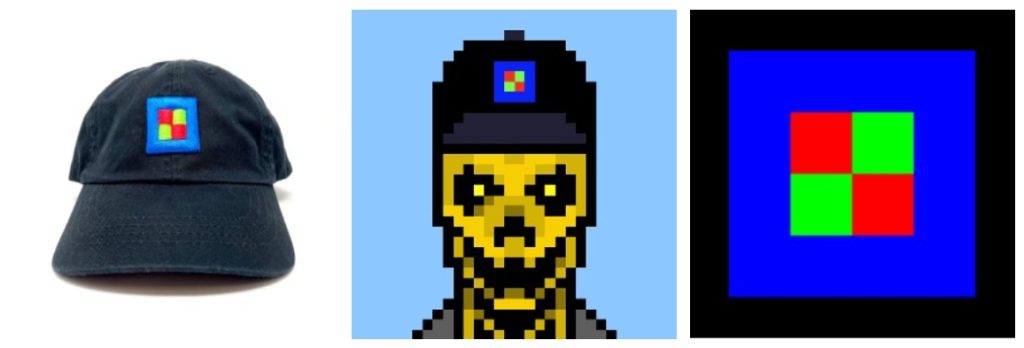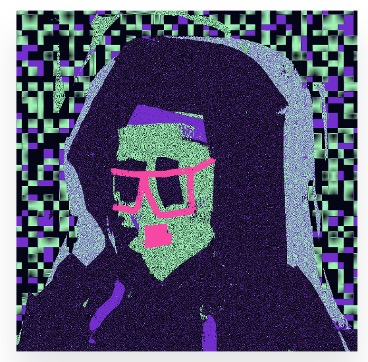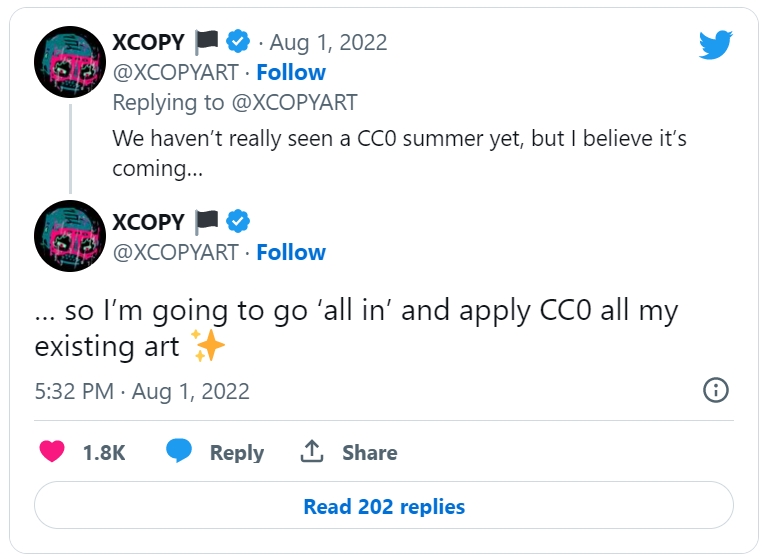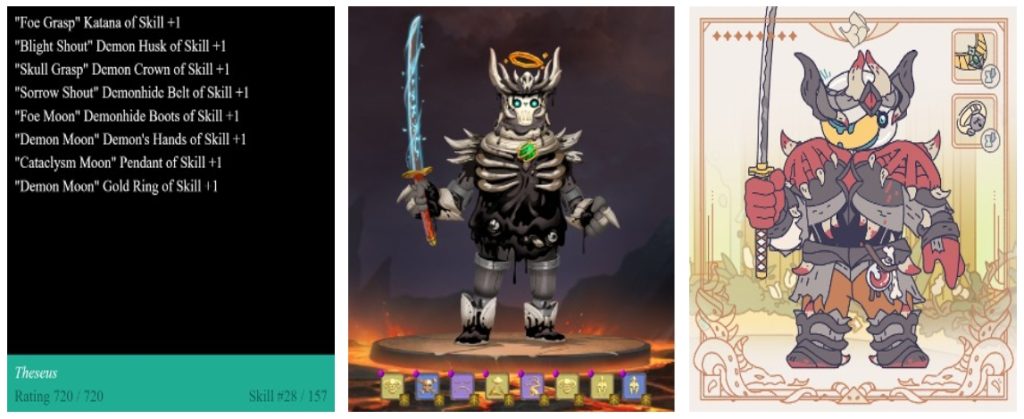
January 1st every year - on the day New Year, but also inpublic domain day» - Thousands of creative works are automatically released into the public domain for the first time. This means that the author or copyright holder loses his exclusive rights (for example, to reproduce, adapt or publish), and this work becomes free for general use. This happens with films, poetry, music, works of art, books - where copyright protection usually lasts up to 70 years old after the death of the author - and even in some cases happens to the source code.
The release of creative works into the public domain also opens up opportunities for a variety of new ways to use them. IN early 2022 approximately 400,000 sound recordings, made before 1923, and well known Winnie the Pooh become public domain. (This Winnie the Pooh - no newer shirt-wearing version 1961, which is still owned by Disney). Since most of the characters in A.A. Milne's 1926 Winnie the Pooh became public, we are starting to see creative adaptations and expressions that Milne probably didn't expect or envision. Indeed, the old version of the loving teddy bear has already been adapted for a horror movie: "Winnie the Pooh: Blood and Honey" ... with Winnie the Pooh and Piglet as villains.
Experimentation and recombination, oddly enough compared to many classic intellectual property (IP) strategies, can sometimes add value to IP. This is the core dynamic of the open source movement, which explicitly allows the public to build upon (or create and duplicate) existing technologies. Much of what it does Android, linux and other successful open source software projects so competitive is that they accept such innovations without permission. The success of cryptocurrencies in attracting public development is also attributed to the general acceptance of open source and “remix culture”, which is especially true for some communities. NFTs.
Mastering production memes
Strategies for building brands, communities, and content with IP vary widely across NFT projects. Some of them support more or less standard IP protection; others grant NFT owners rights to innovations related to intellectual property; still others have gone even further, opting to completely abandon copyright and other forms of IP protection.
By releasing digital objects under license "Creative Commons Zero” (“cc0”) – a disclaimer issued by a non-profit organization creative commons in 2009, creators may consciously choose "rights not reserved". This option allows anyone to create their own works and profit from those works without fear of legal repercussions. [There is still a lot of confusion around copyright as it applies to NFTs, so nothing here should be considered legal, financial, tax, or investment advice — but read this article for an overview of copyright vulnerabilities in NFTs, and how creators can take steps to secure the rights of owners. However, the focus of this article is only on cc0].
The use of cc0 for NFT was popularized by the project nounslaunched in the summer of 2021. Many others soon followed, such as: A Common Place, Anonymice, Blitmap, Chain Runners, Cryptoadz, CryptoTeddies, Goblintown, gradis, Loot, mfers, Mirakai, Shields And Terrarium Club - all cc0 projects - and many, many, many derivatives were created on their basis and beyond.
Popular pseudonymous crypto artist XCOPY, meanwhile, posted his iconic 1-of-1 NFT work "Right-click and Save As Guy» licensed under cc0 in January, just a month after the sale of the work. This cc0 designation has already given rise to many derivatives.


XCOPY went even further, declaring his intention to go "all in" and apply cc0 to "to all my existing art". Artist added: “We haven’t seen the cc0 summer yet, but I believe it will come…” – alluding to a possible growth period similar to the “DeFi summer” in 2020, when decentralized finance has received more attention.

Why are so many NFT creators going down the path?without rights«?
One of the reasons can simply be called "for development" - the promotion of additions to the original project in order to create a brighter and more active community. This is especially important in the context of cryptocurrencies, where open exchange, discovery, and community building are part of the core philosophy for many.
Creative works live and die because of their cultural significance. And while NFTs can make it possible to prove ownership of any digital object, regardless of licensing, cc0 is also launching "memes“, actively, and not just passively, inviting the creation of derivative works. And as new derivatives are created and circulated, attention can return to the original, reinforcing its place in the collective consciousness. This, in turn, can inspire even more interpretations, resulting in pendulum effect, when each additional derivative work increases the value of the original - like platform network effectwhen platforms become more valuable for users as more users join.
In other words, cc0 licensing makes it easier for creators to "take over production memes«.

However, the spread of cc0 around the world is only the beginning.: real material objects also use cc0 NFT assets. Iconic square-framed glasses that can be seen on every new NounsDAO NFT (slogan: "one a day, forever"), have been turned into real luxury sunglasses that can be worn on the face, thanks to the project Nouns Vision. Blitmap has seen their pixel art freely portrayed on shoes, clothes And hats All from different companies. This is in stark contrast to more traditional intellectual property models, in which one owner typically controls creation, licensing, and production.
Hat with logo Blitmap actually has multiple cc0 levels: the physical "blitcap" (3rd level) is derived from a trait in the cc0 Chain Runners collection (2nd) that uses the "logo" of the original from the cc0 Blitmap (1st)! In fact, the "logo" is a feature Blitmap #84, and this is one of several features of the Blitmap collection that has been used as a trait in other independent collections. (Another popular choice is "Dom Rose», token #1.) These links point to Blitmap's influence as the leader of cc0, as one of the first major NFT projects, declared about their intentions to become public property. And the links keep spreading - for example, the new collection Citizens of Tajigen, released last week, includes a version of the symbols blitcap.
These kinds of derivatives can be win-wins for everyone – not just the creators of the original – especially for projects that use NFT assets to create new brands: The derivative borrows some brand awareness from the original project; then, when people learn about the derivative on their own, it can generate new interest in the original. If you see someone with glasses nouns on the street (or Super Bowl advertisement), you might want to buy yourself a pair - but you might also be interested in buying an original NounsDAO NFT or some other similar derivative. [Indeed, the second author of this article first learned about Blitmap through Chain Runners, and although he couldn't afford Blits, he ended up acquiring a couple of derivatives"Flipmap«].

Open source as co-creation
The strength of NFTs is partly due to the inherent nature of this technology. compositionalitybecause it is built on technology smart contracts. Many smart contracts are explicitly designed as building blocks, which can be combined or stacked on top of each other to create ever richer applications.
The term "cash lego" was coined to describe the combination of decentralized finance ("DeFi") smart contracts that interconnect to create new financial applications. (For example, the yield aggregator years interacts with $DAI stablecoin from MakerDAO and exchange liquidity provider curve, among others, by simply calling the public functions of their smart contracts). Seen through this same interoperability lens, NFTs and their underlying smart contracts can act as the foundation upon which culture and creativity can recombine and connect with each other.
And cc0 allows all of this to happen with the explicit permission of the original creators—thus giving the NFT enthusiast community a literal license to create new layers of value anytime, anywhere, however.

Parallels can be drawn with open source in a broader sense - and, in particular, with development of Linux. When the Internet was still new, Microsoft controlled most of the operating system market with its own operating system Windows closed source. But linux (and its creator Linus Torvalds) advocated the idea of a community, opening the source code for anyone to use, modify and distribute without restrictions. This has led (among other things) to developers all over the world collaborating and building new software for Linux, from web servers to databases and everything else. As people (and companies) continued to build world-class open source software, the value proposition linux strengthened, eventually leading to explosive growth and further innovation in the industry. According to market analyst truelist, today Linux accounts for more than 96.3% of the top 1 million web servers, as well as 85% of smartphones.
As cc0 licensing begins to empower NFT community creators in this way, there is hope for a long-term innovation trajectory here as well. Based on Lego logic, proposed punk4156, the pseudonymous co-founder of NounsDAO: combining cc0 with NFT "turns a competitive game into a cooperative one." This is important on several levels: First, decentralized systems, from open source to cryptocurrencies, rely on trust and coordination between strangers, so creating opportunities for collaboration is critical. Second, the dynamics of such collaborations work particularly well in the context of NFTs, as giving people ownership of their digital assets allows them to internalize the results of co-creation through the value that accrues to their assets and contributions—and this in turn encourages them to participation in co-creation in the first place.
License to create
If cc0 projects are like individual open source “applications” or “platforms”, then NFT artwork, metadata and smart contracts provide the “user interface”, while the underlying blockchain (like Ethereum) is the “operating system”. But for these applications to reach Linux-like potential, more supporting infrastructure services need to be created and made available so that people can make the most of the remixing opportunities that cc0 creates.
These services are beginning to take shape. For example, the protocolhyperstructures» Zora and an open source protocol OpenSeaSeaport allow the creation of open, permissionless markets for NFT trading. Recently, the engine was fully published on the Ethereum blockchain pixel art rendering, which is already integrated into projects such as OKPC And ICE64. Each successive application expands the capabilities of the blockchain out of the box, resulting in new applications built on top of these now more numerous improved building blocks.
Although the growth in the number of web3 developers is at a record high level and growing rapidly, the total is still a small fraction of the total number of active software developers worldwide. But as more and more developers enter the space, NFT start-up projects can find a lot more creative and infrastructural "lego" to build cc0 projects and beyond.

Compatibility - key to growth. Because these digital assets are built on public standards on an interoperable infrastructure, it is easy for users to connect their assets to different platforms. An example of how this extensibility works in practice is Loot projectwho was one of the first to show evolution decentralized co-creation, world building, and more in NFTs. We give this example also because, from an aesthetic point of view, it was, first of all, of little functionality and even "incomplete", which left more space for the imagination and for the co-creation of the community.
For context, Loot started with a series NFT for Loot bag, each consisting of a simple list of eight "adventure items" written in white on a black background (e.g., Loot Bag #5726 "Katana, Divine Robe, Great Helm, Wool Sash, Divine Slippers, Chain Gloves, Amulet, Gold Ring"). Released free of charge by the original created by Dom Hoffman, these Loot bags have served as a starting point for the community.
A few projects have really begun to bring everything to life - from metaphorical world building (lore) to physical world building (“game development”) in a short period of time, and the creators of all projects have contributed many derivatives to the collective "Lootverse". They already made gamesRealms & The Crypt); characters (Genesis Project, Hyperloot And Loot Explorers); storytelling projects (Banners And openquill); and even layered infrastructure (The Rift).
How do cc0 and composit apply here? Since users own and control the underlying Loot bags – a primitive that makes sense in many different game and story environments – they can use these underlying assets anywhere by simply connecting their crypto wallets. This allows them to participate in numerous derivative projects, including such as Genesis Adventurers, whose special characters appear in many other projects - in essence, creating a decentralized franchise that does not belong to any entity.

When to upgrade to cc0
As already mentioned, there are many strategies that NFT projects can use when it comes to developing and building their IP. When it comes to cc0, it's important to be realistic. The mere application of a license will not make any project sensational. Don't expect the public domain to suddenly make something popular and successful. As with open source, cc0 is best suited for NFT projects that create the potential for a rich, expanded ecosystem.
Many of the most successful cc0 projects to date have achieved success through the implementation of intellectual property that can be used flexibly in a variety of contexts. The Nouns brand is just as intuitive for beer ads as it is for physical glasses; Loot bags are basic primitives that make sense for all sorts of adventures; and the Goblintown art style looks just as good on gnomes, zombie And grouchy owls, as on Vale Kilmer.
We believe that the ideal cc0 NFT project creates opportunities for manufacturers to add value, such as
- vertically, by stacking new content and features directly on top of the original cc0 assets (such as in games built on the Loot ecosystem, among others), and
- horizontally, by introducing separate but related intellectual property that helps spread the brand of the original cc0 project (such as the various derivatives of Goblintown).
The business model of cc0 NFT projects can directly benefit from this kind of activity. Because cc0 NFT projects typically receive ongoing royalties from secondary sales, third-party extensions and derivatives can become revenue streams by increasing demand for original cc0 assets.
Moreover, using cc0 licensing reduces friction, which could otherwise prevent the creation of brand-enhancing extensions, or worse, cause them to be created bypassing the original. How recently explained Robbie Broom (in the context of your cc0 project A Common Place): "By giving my IP to cc0 instead of 'protecting' it, I avoid bad reuse later on. If, for example, Urban Outfitters wants to put my design on a t-shirt, instead of hiring someone from their team to design something similar, they can just use the actual work." Sometimes accepting cc0 can effectively turn a competition into a collaboration.
In addition, cc0 projects can greatly benefit from community consensus on the value and contribution of core assets.. Here are important community cohesion and engagement. Building on the examples already mentioned above: Although developers can in principle create adventure games with any theme and item concept, the fact that many choose to develop based on Loot bags, reflects the cohesion of the community within Lootverse. Meanwhile, the derivative of Blitmap project Flipmap shared part of their income with the artists of the original Blitmap in recognition of this project's key position in the community - a move that can promote a healthy culture in the cc0 project ecosystem. As noted commentator project cc0 NiftyPins, “It was a smart move to honor the people who created the foundation for the existence of their universe. It also contributed to the creation of an environment in which many of the OG Blitmap artists have logged into the Flipmap discordprovided information and communicated.
But again, cc0 is not a one-size-fits-all solution - for example, NFTs built on brands that are already well known may prefer much more restrictive licenses as a way to protect existing intellectual property and potentially reinforce exclusivity. Moreover, while cc0 bears some superficial resemblance to a strategy to allow NFT holders to specifically commercialize the intellectual property associated with the NFTs they own − Bored Ape Yacht Club, - there is a significant difference: cc0 owners do not have the right to prohibit others from using the same IP. This can make it difficult for owners to create commercial brands based on cc0 assets or grant special rights to partners - although of course owners can introduce extended intellectual property (like backstories or derivatives) that they have full control over.
* * *
Decentralization and open development are core elements of blockchain technologies and broader cryptoethics. This makes it very natural for crypto projects to build around cc0 content models – which are based on the work of the Creative Commons Foundation and several open source innovators – and may represent one of the purest formal implementations of this open source philosophy to date.
Like the creators of open source projects, NFT creators who choose cc0 must decide what role they want to play in building the surrounding ecosystem. Some cc0 project leaders, such as the creators of Chain Runners, continue to build from the original cc0 assets, actively creating an environment, which derivative projects can connect to and build on. The House of Hofmann, in contrast, moved away from Loot, allowing the community to take charge. (At the same time, Dom is working on other cc0 NFT projects within the Blitmap development company he founded and others). Other creators leave completely, such as, for example, the pseudonymous sartoshi, which announced his retirement from cc0 project mfers, which he developed, and out of the NFT space entirely, releasing the final version, aptly titled "end of sartoshi", and then deleting your twitter account. The smart contract of the mfers project is now controlled wallet with multiple signatures from seven members of the mfer community.
Regardless of the level of involvement of original creators, cc0 licensing can provide a robust community for co-creation in a way that benefits all involved. As the NFT space matures and matures, we expect to see more organized infrastructure and design models to support these efforts. There will likely also be innovation around value frameworks, as was the case with open source software. (For example, we can see the version "Sleepycat licenses", which requires proprietary software products to pay royalties when they embed certain open source components). And as creators continue to develop this space, we expect them to develop and experiment with new rights and licensing models far beyond what is in use today. But in any case, cc0 offers NFT creators the opportunity to launch projects that may one day take on a life of their own.
flashrekt is a crypto enthusiast, NFT collector and member of several DAOs, including c0c0dao, DAO investing in cc0 projects, and SharkDAO, collection club NounsDAO. Prior to his jpeg journey, he worked in IT infrastructure for over 15 years.
Kominers - professor of business administration Harvard Business School, member Department of Economics, Harvard University and Research Partner in Cryptocurrency a16z.
Editors: Robert Hackett and Sonal Chokshi
Translation author articles : love mushroom
